|
Chapter II:
From Bermondsey To The Deep
South
So how did English music hall songs, themes, etc. reappear on the other
side of the Atlantic, in some cases over fifty years later? One of the
possible routes for these songs to the Southern states, is via New York
City.
Many English music hall artists travelled to the U.S.A. and toured
extensively; some of them were a great success and featured as top of
the bill. Performers such as Jenny Hill, Nellie Power, Fannie Leslie,
Marie Loftus, and Little Tich toured in America between 1870 and 1887.
Although Russell says that "It is difficult to determine which
characteristics of music hall were purely American and which English
(and which shared),"(1), music hall in the U.S.A. "... had existed from
the seventies. Tony Astor in New York had brought acts from London and a
constant exchange had always taken place."(2). Both music hall and
variety shows coming under the label of vaudeville in the U.S. But music
hall had evolved in England in the 1840's (see chapter 1). As early as
the 1820's, Sam Cowell, "one of the earliest music-hall performers and
the first star of the Canterbury Music Hall."(3), arrived in the States
as a young child. "He later toured with his father playing Shakespearian
roles ... entertaining between the acts by singing negro songs."(4).
Cowell returned to England in 1840 to become a leading comic-vocalist
and at the height of his career he returned to the U.S.A. for an
extensive tour, "opening on 28 November, 1859 at the French Theatre, New
York. During the next 20 months he toured with a small variety company
throughout the U.S.A. and Canada."(5). Russell agrees that "...each
country sent popular ideas to the other, "(6).
An author's note on 'Read 'Em And Weep’ (1926) by Sigmund Spaeth runs
(in part): "The emphasis is primarily on the social history of the
United States, but some credit is given to "English influences". The
interesting revelation is that American versions of most of the songs of
the Lions Comique of the sixties appear with backgrounds adapted to
Central Park and Broadway, and seemed to be claimed as Americana."(7).
Pulling's evidence for this statement seems to be hinged on one example,
"The Dark Girl Dressed In Blue" by Harry Clifton, written by George
Ware, from the 1860's. One verse is quoted:
"I went in a sixpenny omnibus
To the Exhibition of Sixty-two;
On a seat by the right-hand side of the door
Sat a dark girl dressed in blue."(8).
The second line refers to an International Exhibition in South
Kensington in 1862. In a footnote Pulling says "This song also caught on
in America,"(9). In New York the lyric was 'acclimatized':
"I jumped into a Broadway stage, The Central Park going to;
On a seat by the right-hand side of the door
Sat a dark girl dressed in blue."(10).
Possibly, Clifton's earlier song "Polly Perkins of Paddington Green"
published in 1863, was a precursor of "The Dark Girl Dressed In Blue".
Like the latter, one verse has a reference to a girl and a bus; only in
this case he loses her to "a bow-legg'd Conductor"(11). In any event,
Pulling may well be right in his hypothesis; and I will be citing more
than one example of English influence in the U.S. as a whole, including
of course New York (see chapter III). Pulling continues "We are apt to
think of the 'American invasion' of popular music as dating from about
1912, but it becomes clear that there was a flourishing two-way traffic
fifty years or more before that."(12). The 'Lion Comique' that Pulling
referred to was a comedian/singer who was larger than life and was
always seen as the most successful of the genre, in dress, style of
transport, social engagements, etc. The 1912 'invasion' was of course a
musical one represented by ragtime. Pulling's last comment would take us
back to c.1860 and as has been pointed out, the English music hall
tradition had been going for at least 20 years before then. However, one
of Russell's "popular ideas" which came to Britain from the U.S. was
that of minstrelsy and the phenomenon of 'coon songs'.
The most durable and consistent feature of these phenomena was
'blacking up' or adopting a 'blackface' whilst engaging in often
exaggerated, sometimes grotesque dance steps and singing 'plantation
melodies' which parodied common white misconceptions of 'the happy darky'
on Southern cotton plantations. Originating with a dance called "Jim
Crow", by a white, Thomas Rice in 1828, who based it on studying "...the
curious step of a deformed Negro stable-hand in Louisville..." (13), in
Kentucky, these characteristics were soon to be picked up by white
minstrel groups who would travel throughout the States in the 1830's and
'40's. In an increasingly complex process of multiple parody, within
three decades, black versions of these groups appeared. By 1910 two of
the most famous were in operation; the Rabbit Foot Minstrels and Silas
Green's from New Orleans. The former was run from Port Gibson,
Mississippi, and both featured Blues singers in their entourage. On a
smaller scale were the medicine shows which also featured Blues singers,
often used to trump up business for the 'Doctor' selling his bottles of
medicine and other so-called remedies. There were also tent-shows,
circuses and 'second companies'. The latter were "...often for Negro
audiences only and were called the 'dirty shows' in the circus business
itself"(14). All of these sources of entertainment often featured,
besides Blues singers, jugglers, magicians, acrobats and blackface
singers; including black artists themselves. (see Fig. 1 below).

Fig. 1: Medicine show c.1935. Includes ventriloquist, 'Indian Chief',
and black in blackface waiting to go on.
"In his pioneering study, "Blacks, Whites, and Blues", Tony Russell has
posited a "common stock" of songs on which blacks and whites drew."(15).
Although both Oliver and Russell are referring to Americans, it is
becoming abundantly clear that many contributions of this "common
stock" came from the English music hall tradition. By their own
admission, Blues singers Furry Lewis and Poor Big Joe Williams used to
do blackface routines in the medicine shows, which were going "as early
as 1906"(16). "We work blackface comedian you know. Just take lamp
black, some grease, put it all over your face like in those vaudeville
shows... ---we all used to do that. Take flour and soot to make you
dark; we had wigs we wore sometimes; we had them old high hats and them
long coats and a walking cane and them button-type spats"(17). If this
was "the typical minstrel show attire" as Oliver says, it was also
typically English music hall.
The travelling minstrel groups influenced music hall early on. A star of
Evan's Supper Rooms, prior to 1860, who was lured to Charles Morton's
New Canterbury Hall was E.W. Mackney, "the Great" Negro
impersonator"(15). Following in his footsteps were artists of the 'burnt
cork' such as Sam Redfern and in 1868 Herbert Campbell "...made his
music hall appearance at Collins's..."(19). But overshadowing these were
G.H. Chirgwin ("The White-eyed Kaffir") with “....his one-string fiddle
and his high falsetto voice,(20), the blackface American Eugene Stratton
and "G.H. Elliott ("The Chocolate-coloured coon") who continued the
tradition...”(21).
By the turn of the century, music hall numbers of the 'coon song'
variety were being recorded in ever-increasing quantities. In 1903, Phil
Ray recorded "I'm Not A Coon" and two years later "The Wail Of The Coon
Singer". 1906 saw Ella Retford's "The Sun Am Shining" while in 1908
Billy Williams offered his "All Coons Look Alike To Me" (written by a
black in 1896). Bessie Wentworth, though she didn't record, from 1894
featured "Looking For A Coon Like Me" "both on the halls and in musical
comedy".(22). As Manders & Co. said "From the earliest times blackfaced
artists had great success on the halls, and often came from the minstrel
troupes which had started in the 'forties."(23). This was of course
referring to the 1840's in the U.S.A. The aforementioned Eugene Stratton
had come to Britain "...with Haverley's Minstrels, 1881, migrating to
the halls in 1892."(24). 'Coon songs' he became famous for included "The
Lily Of Laguna" and "My Little Octoroon" both recorded in 1903 and his
earliest disc "Little Dolly Day Dream" as early as 1899. Back in the
1850’s a Punch man told Mayhew that "A drama or dramatical
performance (sic) we calls it, of the original performance of Punch. It
ain't a tragedy; it's both comic and sentimental, in which way we think
proper to preform (sic) it. There's comic parts, as with the Clown and
Jim Crow, and cetera--" (25). Around 1856, coster mongers informed him
"We are fond of music. Nigger music was very much liked among us, but
it's stale now."(26). Interestingly, the coster mongers interest in
'nigger music' coincided with music hall's move to the West End of
London. Perhaps casting the East End into some sort of trend-setting
role!
Although the early music halls were mainly featured in the East End and
the two main sources of
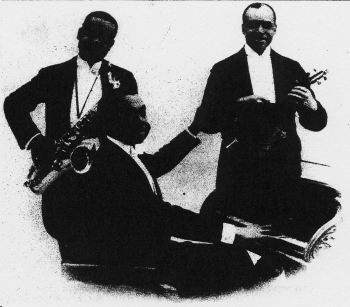 talent were Cockney
and intriguingly, performers from Lancashire, people from all over the
country and indeed the world, became music hall acts of varying degrees
of quality, fame and success. These included some American
singer-performers, as well as Stratton, such as May Moore Duprez,
'Happy' Fanny Fields, and Nora Bayes, who made their first appearance in
London between 1900 and 1906. In 1915, three years after ragtime had
become the latest craze in England, "coloured artists began to come to
this country..."(27). Fannie Leslie, "though English, first appeared in
America in 1872"(28), and performed in London the following year. talent were Cockney
and intriguingly, performers from Lancashire, people from all over the
country and indeed the world, became music hall acts of varying degrees
of quality, fame and success. These included some American
singer-performers, as well as Stratton, such as May Moore Duprez,
'Happy' Fanny Fields, and Nora Bayes, who made their first appearance in
London between 1900 and 1906. In 1915, three years after ragtime had
become the latest craze in England, "coloured artists began to come to
this country..."(27). Fannie Leslie, "though English, first appeared in
America in 1872"(28), and performed in London the following year.
Fig 2: The
Versatile Three in UK, 1915
The point being that there were many opportunities for minstrelsy to
make its presence felt in English music halls, and clearly there is much
evidence it did so, and to some extent these visiting Americans would in
turn be influenced by English music hall songs. This is even more true
when we consider the case of English visitors to the U.S.--to complete
the two-way traffic suggested by Pulling. Unlike the earlier English
touring performers, some of these artists recorded in the States.
This English influence had every opportunity to be felt in every nook
and cranny in the U.S. via the Rabbit Foot Minstrels, etc. As Oliver
said "Traveling minstrel, carnival and circus shows enabled people in
even the smallest townships and remoter rural areas to hear the current
songs of the day, as well as the older favourites of the minstrel
tradition and from the ragtime era. In particular, with a number of the
major jazz-blues and vaudeville-blues singers performing under canvas
with traveling companies, there would appear to have been many occasions
when songsters were able to hear them and to learn their numbers. Such
singers had been recording for a few years before the songsters made
records, and these issues would have offered additional opportunities
for them to memorize the words and tunes."(29). Oliver here is referring
to the vaudeville (nee Classic) female Blues singers who started to
record in 1920; and included such luminaries as "Ma" Rainey, Bessie and
Clara Smith (no relation) and Rosa Henderson, amongst scores of others.
The songsters, predominantly male, which included the rural Blues
singers, did not get on record until the spring of 1924, commencing with
the sole coupling by twelve-string guitarist, Ed Andrews. The latter
singers were generally unable to read music (indeed Blues of this more
'raw' variety could not be accurately notated) and so could only pick up
or learn songs and reshape them by oral transmission. Of course access
to records greatly enhanced this process.
By the same token, many of the English music hall singers who passed
through the various towns and cities in the U.S. would have made some
contribution to this oral process. Recordings by some of these singers
were made in New York City as early as 1907 and would in turn have been
heard by the vaudeville-blues singers, thus reinforcing what could still
(in the early days of recordings) be regarded as oral transmission. The
rural Blues singers, Oliver's 'songsters', would have also heard the
latest songs, etc. via the medicine shows, including Big Joe Williams,
Furry Lewis, (as already stated), Jim Jackson, Frank Stokes, Gus Cannon,
and countless others.
In the minstrel and carnival shows, as well as the medicine shows, many
Blues singers travelled the country, the former usually working in a
large tent. Famous Blues pianist Leroy Carr's 1930 record of "Carried,
Water For The Elephant" "...was supposedly based on a teenage interlude
as a waterboy in a circus,"(30). This would have been around 1918 at the
earliest. These entertainment phenomena were ideal for
cross-fertilization of folk songs, blues, broadside ballads, sheet
music songs, vaudeville/music hall numbers, etc.
White names in American show business were also involved in the
medicine shows in particular. As well as many early country singers,
including the famous Timmie Rodgers, Oliver informs us "The comedian of
the silent movies, Buster Keaton, was born of medicine show parents, the
Joe Keatons, who worked the Dr. Hill's California Concert Company
selling Kickapoo Magic Snake Oil; their companions on the show were
Bessie and Harry Houdini. Before his "white-face" act, Buster Keaton
himself played in blackface in 1896."(31). The 'product' just referred
to would also be featured in the Kickapoo Medicine Show which included
Gid Tanner (1885-1960) and his Skillet Lickers from north Georgia.
Tanner and some of his contemporaries like Ernest V. Stoneman and
Charlie Poole "were authentic countrymen, and so they sounded; but these
music hall songs had a place in their repertoire just as much as the
ballads and dance-tunes."(32). As Russell says "if Stratton and his
disciple, G.K. Elliott, 'The Chocolate-Coloured Coon', made one kind of
Americana appealing in England, there was certainly an enthusiastic
response to such gems of the music hall era as "Champagne Charlie Is My
Name", "If You Were The Only Girl In The World" and "She Was Poor But
She Was Honest"(33). Two of these titles were popularised by 'Lion
Comique' George Leybourne including "Champagne Charlie" which will be
discussed at some length in the next chapter.
As I have said, some English music hall singers, serio-comics, etc.
recorded in the U.S. not long after the turn of the century. These
included Vesta Victoria who did four sessions from June to August in
1907. Alice Lloyd, sister of the more famous Marie, also recorded in the
same year, having three sessions in May and June. Over two years later,
Albert Whelan did one title in November, 1909, and George Lashwood cut
one session in the following January. Between 1909 and 1923 artists such
as Harry Lauder and Joe Hayman also cut discs in the States. All of
these records were made in New York City. Lauder also made records every
two years from 1916-1928 in Camden, New Jersey. Julian Rose seems to be
the earliest recorded artist in New York, in 1903 and did several later
sessions up to 1921.
Many more performers from the English music halls visited the United
States in the hey-day of the music hall (1890-1914), even if they did
not record there. These included Albert Chevalier, Bessie Bonehill,
Cissie Loftus and Lottie Collins. The latter toured the U.S. in 1891
where she first heard the song "Ta-rara-BOOM-de-ay" with which she was
always to be associated. Busby tells us "The American origins of the
song are obscure, having its roots in the negro folk music of the deep
south."(34). It was heard in St. Louis, Missouri, "with the refrain
"Tin-a-ling-a-ling boomderay".(35). St. Louis was to become one of the
major Blues centres in the first decades of the 20th. century and some
Blues by St. Louis-based singers invoking earlier music hall themes will
be discussed in Chapter III.
Bessie Bellwood "one of the greatest music hall comediennes,"(36),
visited "America in 1895, scoring a great hit at Koster and Bial's Music
Hall, New York,"(37). She "...started out as a rabbit skinner in the New
Cut near Bermondsey, singing Irish ballads at night in obscure
free-and-easies; later she became best known as a singer of comic
Cockney songs."(38). Her most famous song was "What Cheer 'Ria" from
1887. In 1893, Ada Reeve "...first went to America as a star..."(39),
and subsequently included the States in a series of world tours,
starting in 1906. G.H. Elliott (1882-1962) spent most of the first
seventeen years of his life in the U.S. until 1899, while on her several
tours in the U.S.A., Vesta Tilley (1864-1952) "was perhaps the greatest
success of any English artist either from our theatres or the music
halls."(40). As well as her New York recordings, Vesta Victoria's
"...first great success was in 1893 when the song 'Daddy Wouldn't Buy me
a Bow Wow' established her at the top of the bill both in the U.K. and
the U.S.A. In America she toured in vaudeville for a total of six years,
singing her numbers with an audacious mixture of coy innocence and
innocuous innuendo." (41). If Vesta's touring commenced with her New
York recording sessions, she could have been in the city when
vaudeville-Blues singer Mamie Smith who was borne in 1884, was first
there; as at the age of "...twenty-nine, in 1913, she had arrived at
Harlem" (42).
In addition to this English 'invasion', well-known ventriloquist (at the
time) Walter Lambert, was also a painter and one of his greatest
achievements was his "wonderful composite picture, entitled
"Popularity". It contains faithful portraits of every variety artist
male and female at all known or popular at the time of the painting,
namely 1903."(43). Newton adds that this painting "...has also
penetrated to the United States, as so many artists depicted therein
have been known, and have become more or less popular."(44).
It is readily apparent, from the foregoing, that the influence of
English music hall songs had plenty of opportunities to make itself
felt, not only in New York but throughout the U.S. including the Deep
South. This would be partly achieved by recordings and also live
performances by visiting English artists. This influence is reflected in
an advertisement for Victor records in their catalogue c.I903. (see Fig.
3.). The latter lists two songs "If You Love Your Baby, Make Goo Goo
Eyes" and "Just Because She Made dem Goo Goo Eyes", both recorded by
blackface singer Arthur Collins. The second song with 'Them'
substituted for 'dem', was recorded by "Belle Davies & Her Picannines"
(sic) in London in March of the previous year. It may well be, as
Russell postulates, that songs such as these were picked up by whites in
the States, from travelling English music hall artists, and then become
part of the 'common stock' shared with black singers; as with the leader
of the illustrious Cannon's Jug Stompers (1928-30), Gus Cannon. The
latter, in his "Can You Blame The Colored Man" of 1927, which is a
light-hearted dig at black leader, Booker T. Washingtom's visit to the
White House in 1901 with President Roosevelt, utilises the Belle Davies
title:
"Now Booker T. he left Tuskegee (sic)
to the White House he went one day,
He was goo' to call on the President in a quiet and sociable way.
He was in his car? sure was feelin' fine."
"Now of Booker knocked on the President's door,
of Booker he began to glimpse.
Now he almost changes color when Roosevelt said to come in;
"we'll have some dinner, in a little while."
Now, could you blame the colored man,
for making them goo-goo eyes?"(45).
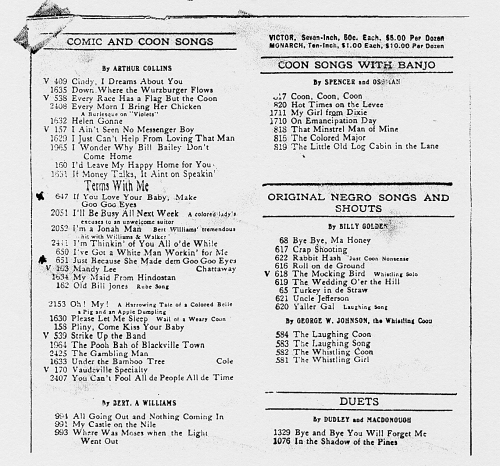
Fig 3: Victor Catalogue, 1903. Only
Bert Williams is a black artist
But if the main routes of English music hall songs to black communities
in the U.S.A. were via New York recording sessions and nationwide tours
in the States, they were not the only routes. Another possible one was
back in London, on the River Thames, in fact. In the easier nineteenth
century there existed a particular type of trader known as river
beer-sellers or 'purl-men'. According to Mayhew, the “ ...
river-dealers boast of an antiquity as old as the naval commerce
of the country."(46). Using skiff-like craft, the purl-men serve a
diverse range of customers with alcohol, on the river. This is mainly to
customers who need a drink while performing their tasks. Much refreshed,
this then gives them the inner strength to finish the job. A list of
these customers includes “... the 'lumpers', or
those engaged in discharging the timber ships, the 'stevedores', or
those engaged in stowing craft; and the 'riggers', or those engaged in
rigging them; ballast-heavers, ballast-getters, corn-porters, coal-whippers,
watermen and lightermen,"(47). Mayhew adds that although coal-porters
unloading barges or ships moored at the river side, where there are
pubs, "nevertheless, when hard worked and pressed for time, frequently
avail themselves of the presence of the purl-men to quench their thirst,
and to stimulate them to further exertion." (48).
The name 'purl' apparently comes from the seventeenth century and was
applied to a mixture of wormwood and ale, "to make it sufficiently
bitter, or for some medicinal purpose."(49). But by 1856 the wormwood
had disappeared from the recipe and purl became "...beer warmed to
nearly boiling heat, and flavoured with gin, sugar and ginger."(50).
There were two or three other river-vendors who did not possess a skiff
or were not granted a licence, who just walked on to a ship or barge
selling mainly spirits from a "flat tin bottle". One of these was
well-known to captains and crews alike. An Irishman referred to as "'old
D--(Dan?) the whiskey man', as he is called,"(51).. It is tempting to
link 'old D--' with a character in a Bo Carter song recorded some 85
years later.
"I taken my baby to the whiskey stand,
She fell on 'er face about the whiskey man.
I'm talkin' about the little sweet girl of mine."(52).
But it is more likely that this Blues from the Mississippi singer uses
the term 'whiskey man' by sheer coincidence--or does it? Be that as it
may, these unofficial river-sellers were known to the purl-men but the
latter never interfered with them.
Mayhew confesses he could not find any purl-men who knew what the term
meant. Apart from one definition which reads "mixture of hot beer and
gin."(53), there is another in the form of a verb "flow with gentle
rippling sound”.(54). A check with Roget's reveals that 'to flow' is to
"...meander; gush; pour;... stream, overflow, ... babble, bubble, purl,
gurgle .... "(55), amongst many others and clearly reveals that a
'purl-man' is literally a "flow-man" or "man of the river".
Intriguingly, Roget's work originally came out the year after Mayhew
first published his epic "London's Labour and London’s Poor" in 1851.
In any event the purl-men would have been in the habit of frequenting
the early music halls, free-and-easies and sing-songs in the East End.
Just as much as the costermongers, the chaunters and various other
groups of street traders and entertainers. The purl-men, "...sitting in
their boat and rowing leisurely about... "(56), would have had the time
and inclination? to sing snatches of the ditties they picked up in the
music halls and would have been overheard by their customers. Some of
the latter would have been from foreign ports including the United
States. These customers, by definition, included sailors "...on board
the corn, coal and timber ships;"(57). By oral transmission, songs would
have been carried back to the U.S. This would be a possible avenue for
the sea shanties and indeed Hugill in his study of the latter says
"According to Sharp the popular Victorian song 'Champagne Charlie' was
often utilised as a capstan shanty." (58). Sharp is the famous folk song
collector at the turn of the century, Cecil Sharp. The case for the
shanties will be considered in a further dissertation "Blues At Sea".
Whichever route they took, English music hall songs and their themes,
made their presence felt in the Blues in the earlier decades of the
twentieth century; as we shall see in the next chapter.
Notes
1.Russell.T. p.12.
2.Mander & Mitchenson. ibid. p.38,
3.Busby. ibid. p.41.
4.Ibid. p.42.
5.Ibid.
6.Russell. ibid.
7.Pulling. C .p,132.
8.Ibid. p112.
9.Ibid.
10.Ibid.
11.Amis.K. & J. Cochrane. p.212.
12.Pulling. ibid. p.132.
13.Oliver. P.p,13. "The Story etc.
14.Ibid. p .58.
15.Oliver. P. p.95. "Songsters etc.
16.Ibid. p.99.
17.Ibid.
18.Pulling. ibid. p181 .
19.Ibid. p.187.
20.Ibid. p.p.203-204.
21.Ibid. p.204.
22.Manders & Mitchenson. ibid. No.106.
23.Ibid. No.104.
24.Ibid.
25.Mayhew. ibid. p.454.
26.Ibid. p.43.
27.Mander & Mitchenson .ibid. No.227.
28.Ibid. No.111.
29.Oliver. ibid. p.81. "Songsters etc.
30.Calt & co.
31.Oliver. ibid. p.89.
32.Russell. ibid. p.p.13-14.
33.Ibid. p.p.12-13.
34.Busby. ibid. p.38.
35.Ibid.
36.Ibid. p.23.
37.Ibid.
38.Vicinus. ibid.p.262.
39.Mander & Mitchenson. ibid. Nos.98,99, p100.
40.Newton. ibid. p.123,
41.Busby. ibid. p.176.
42.Stewart-Baxter. ibid. p.11.
43.Newton. ibid. p.184.
44.Ibid.
45.Cannon. G.
46.Mayhew. ibid. p.269.
47.Ibid. p.268.
48.Ibid. p.269.
49.Ibid.
50.Ibid.
51.Ibid. p.272.
52.Carter. B.
53.Dictionary. p.571.
54.Ibid. p;570.
55.Roget. P.M. p.111.
56.Mayhew. ibid, p.270.
57.Ibid. p.268.
58.Hugill. S. p.562.
Illustrations
Fig.1. Oliver.P."Story etc. p.56.
Fig.2. Mander & Mitchenson.
No.227.
Fig.3. Russell. T. p.19.
_________________________________________________________________________
Chapter III - The English Music Hall and The Blues |
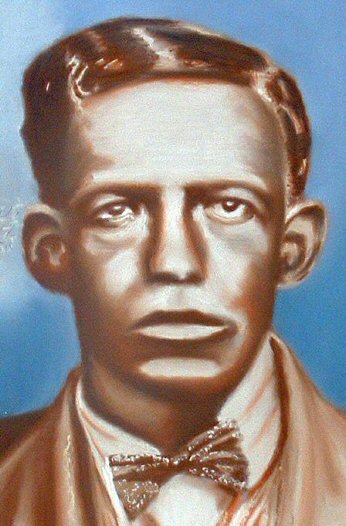
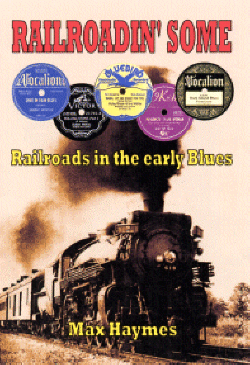
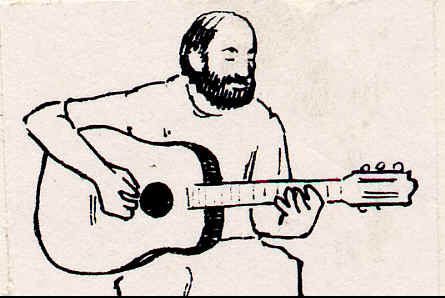





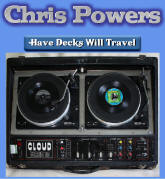

 talent were Cockney
and intriguingly, performers from Lancashire, people from all over the
country and indeed the world, became music hall acts of varying degrees
of quality, fame and success. These included some American
singer-performers, as well as Stratton, such as May Moore Duprez,
'Happy' Fanny Fields, and Nora Bayes, who made their first appearance in
London between 1900 and 1906. In 1915, three years after ragtime had
become the latest craze in England, "coloured artists began to come to
this country..."(27). Fannie Leslie, "though English, first appeared in
America in 1872"(28), and performed in London the following year.
talent were Cockney
and intriguingly, performers from Lancashire, people from all over the
country and indeed the world, became music hall acts of varying degrees
of quality, fame and success. These included some American
singer-performers, as well as Stratton, such as May Moore Duprez,
'Happy' Fanny Fields, and Nora Bayes, who made their first appearance in
London between 1900 and 1906. In 1915, three years after ragtime had
become the latest craze in England, "coloured artists began to come to
this country..."(27). Fannie Leslie, "though English, first appeared in
America in 1872"(28), and performed in London the following year. 